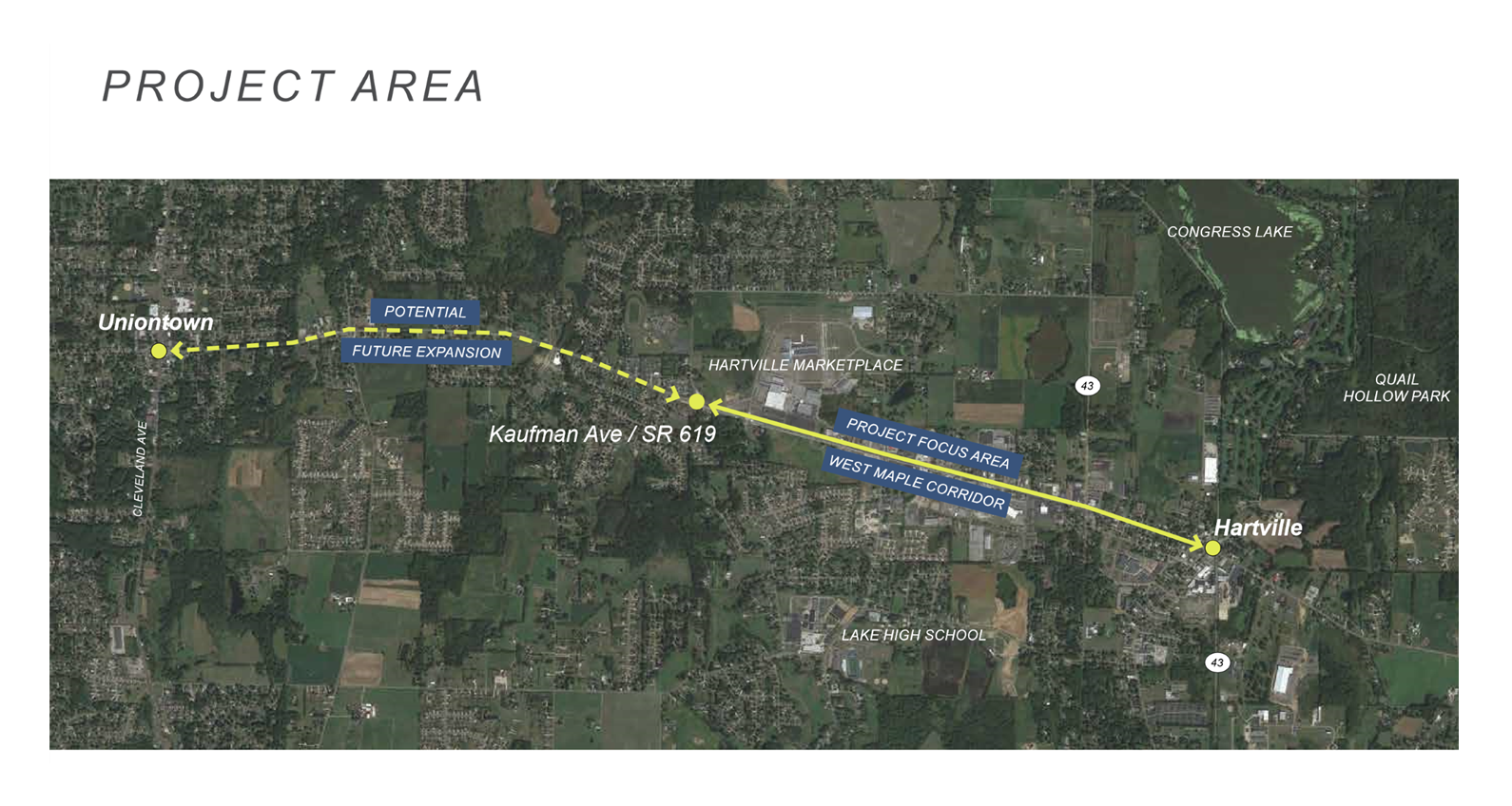
Project Overview
The general purpose of this project is to beautify and connect our community two (2) miles along the West Maple corridor from the Kaufman Ave/SR 619 roundabout at the HRM Enterprises business district to the historic Hartville Downtown District. Eventually, the project may extend an additional two (2) miles further west toward the Uniontown (unincorporated) village center.
The Village of Hartville, Ohio (population 3,056 by the most recent estimates), is located within Lake Township (population 30,027 in the unincorporated township). The historic villages of Uniontown and Greentown (unincorporated) are also located within Lake Township. Lake Township attracts more than 3 million visitors each year, primarily to the Hartville Hardware, the largest independent hardware store in America, the Hartville Marketplace, and Hartville Kitchen.
The project will involve multiple stakeholders including two (2) local governments as well as the Ohio Department of Transportation (ODOT), community members, local property owners, and business owners.
Purpose
The specific purposes of this project are:
- To attract, retain, and grow the number of strong local businesses.
- To provide residents more reasons to shop and dine locally.
- To provide greater amenities appealing to young people in their 20s and 30s and young families.
- To provide multigenerational and accessible amenities and easier means of getting around town aside from automobiles.
- To provide attractive alternate plans and design guidelines to improve the physical environment as it responds to changing circumstances in transportation and local culture.
Goal
The goal of the project is to address the image, function, infrastructure, land use/zoning code, and design guidelines in order to create a Corridor and Downtown that are more conducive to economic development and improved quality of life for the local community. The intent of the project is to improve upon the existing conditions of the Corridor and adjacent space; identify areas of potential development; optimize the opportunities for existing owner’s businesses and entities to be part of the design solution at a property owner level with limited financial investment.
- The plan will be local in terms of material and design selections and engaging to the various ethnic, social, and religious communities in the area while appealing to the many external visitors.
- The plan will be responsive/agile both for now and for future economies. Infrastructure recommendations must accommodate change.
- Connectivity (i.e. bicycle and walking paths) will be included in the plan.
